| HOME | | | FLORENCE | | | ROME | | | CRETE | | | EDUCATIONAL |
Haghia Triada history
|
Haghia Triada history perhaps begins in the Neolithic Period, but no concrete evidence exists allowing to ascribe to this age a sure settlement in the area. The first surely dated ware finds, through comparison with other sites in southern Crete, may be dated in a span of time from Ancient Minoan to Early Middle Minoan (Prepalatial Period), covering the 3rd and the beginning of the 2nd millennium BC. Of particular interest is a ceramics set that, recovered next to a heart, joined with animal's bones and obsidian blades, placed on the top of the hill, could point to ritual ceremonies. It has been hypothesized that such a religious "banquet" could represent an emerging group, able to found a new site. Various ceramic classes, with both domestic and cultual character, various houses vestigies and a series of funerary buildings outside the inhabited area including two circular "tholoi", where also numerous seals have been found, (fig. 1 and fig. 2) follow one another during the whole period, reflecting perhaps a site, composed by living units and scattered groups, changing during the time. The building activity increases in the last phase of the period, just representing a reliable prepalatial starting point. |
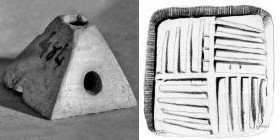 Fig. 1 - CMS I,1 056 bone stamp-seal in pyramidal shape, from Tholos A |
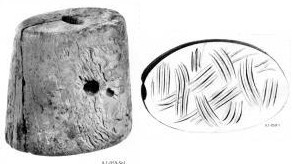 Fig. 2 - CMS I,1 059 ivory stamp-seal, in cylindrical shape, from Tholos A |
|
In the Middle Minoan Period - covering the first centuries of the 2nd millenium BC - the characterizing event is the construction of the big Minoan palaces (Knossos, Phaistos and Mallia). In southern central Crete, Haghia Triada seems already to represent an interactive site with Phaistos, forming together with the coastal site of Kommos, a functional center to the control of a wide district including the Messara plain and overlooking the Libyan sea.The palace of Phaistos represents the apex of the political-administrative organization of the whole area. The Haghia Triada events during and soon before this Protopalatial Period are inseparable from the history of Phaistos. In fact, they cover, in parallel, both the eve of the "palatial change" (MM IA), the starting of the new political and administrative system revolving around Phaistos (MM IB) and the period of its highest flourishing (MM II); finally, the crisis and the destruction of the palace with following unsuccessful attempts of renewal (Early MM III). In the Florentine Archaeological Museum there are many examples of the "guide" ware of this period, the so-called "kamares ware", some of which seem to came exactly from Haghia Triada. (fig. 3 and fig. 4). |
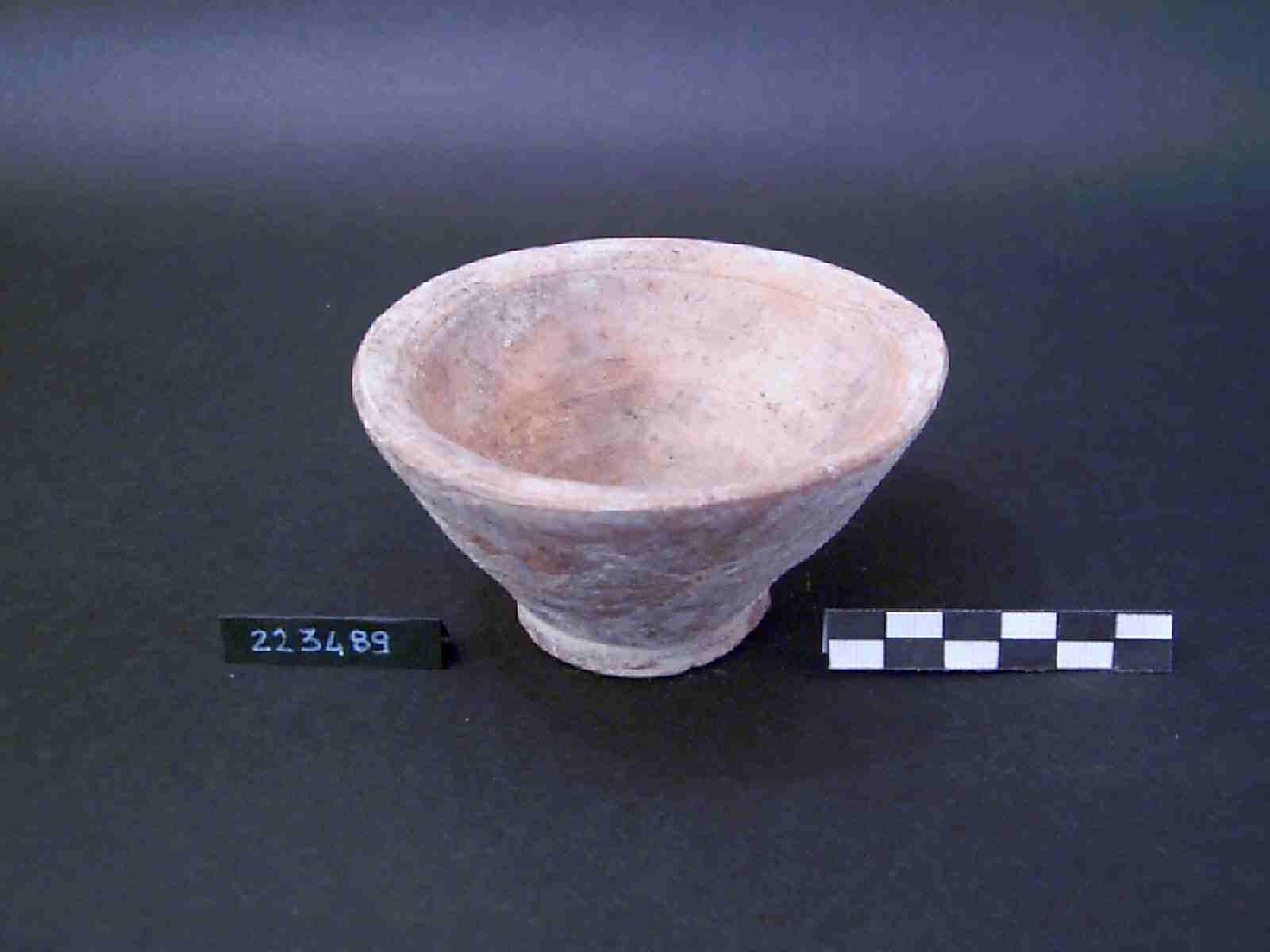 Fig. 3 - Pitcher with barbotine decoration |
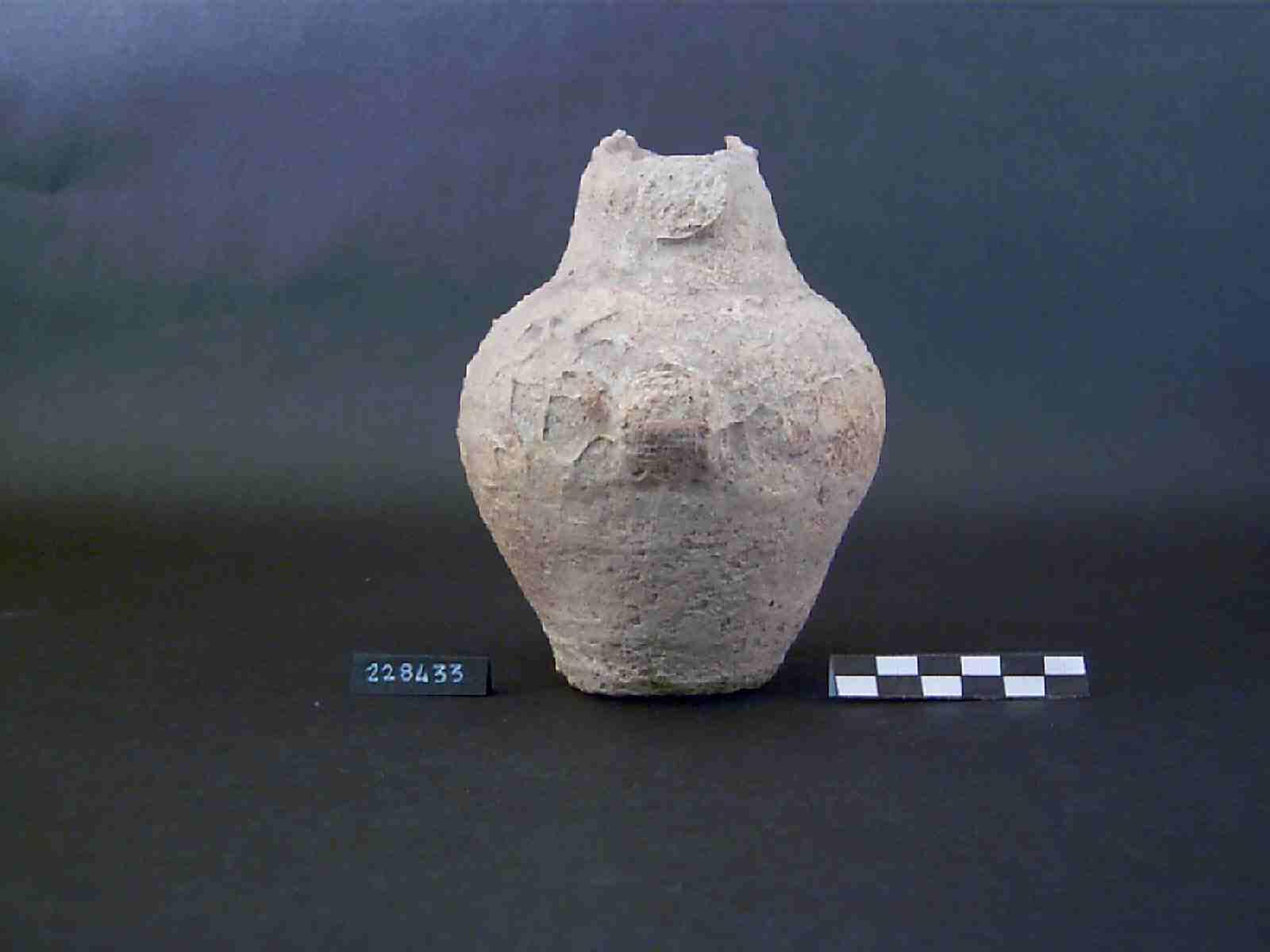 Fig. 4 - Skouteli |
|
Moreover we recall the few seals of this period likely coming from Haghia Triada but without a precise context, which might reveal the presence of a local élite, but do not allow the reconstruction of a wider administrative sphere (fig. 5). |
 Fig. 5 - CMS II,2 201: steatite four-sided prism |
|
|
The period of interest for our interactive museum is the Neopalatial Period (Advanced Middle Minoan III - Late Minoan I-II), approximately between 1700 and 1450. In this period both the "Villa" and the "city" are built at Haghia Triada (fig. 6). The administrative documents go back just to the final phase of this period. Despite the chronological problems on the beginning and the end of the "Villa", this complex represents with certainty the heart of the activity of Haghia Triada. Its role of residence for administrative offcers, with representative areas, cultic rooms, archives and storehouses is well testified. The settled area already inhabited before the construction of the "Villa" has a substantial boost: it extends both along the eastern slops of the hill (see the monumental "Casa Est" and the plainer "Casa dei Fichi" and "Casa a nord della Casa Est") and a new extension occurs to the north of the "Villa", limited by two east-western massive walls (see "Casa del Lebete" and "Casa delle Sfere fittili"). The funerary area goes on extending in the north-eastern sector and is provided with a supporting structure for the activities connected to the rituals for the dead. |
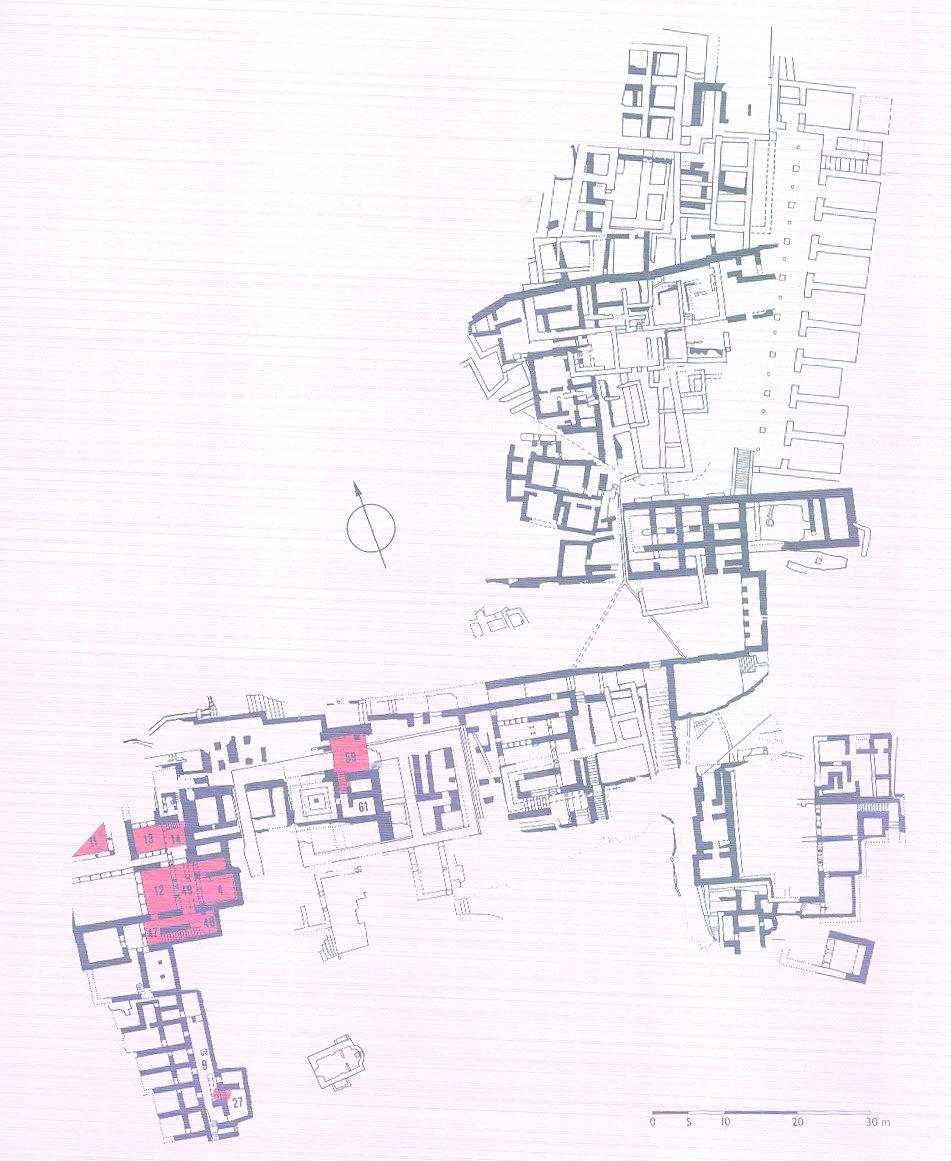 Fig. 6 - Haghia Triada: Neopalatial structure (black), administrative findings (red) |
|
|
Frescoes (fig. 7), stone vessels (fig. 8, fig. 9 e fig. 10), ceramics (fig. 11), represent, together the administrative documents, an exceptional patrimony for our knowledge on this period. |
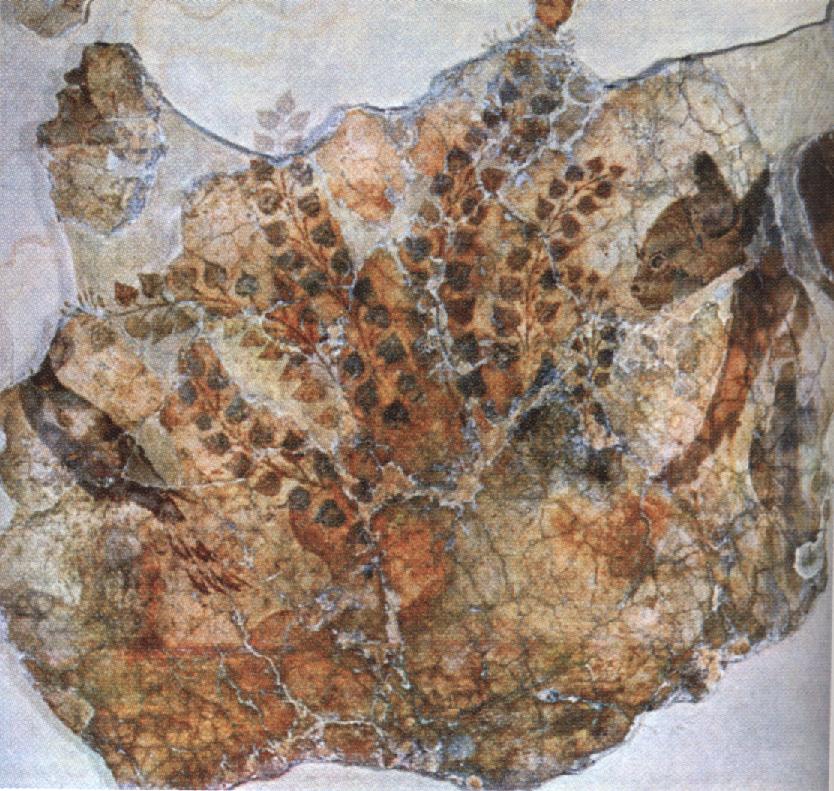 Fig. 7 - Cat fresco |
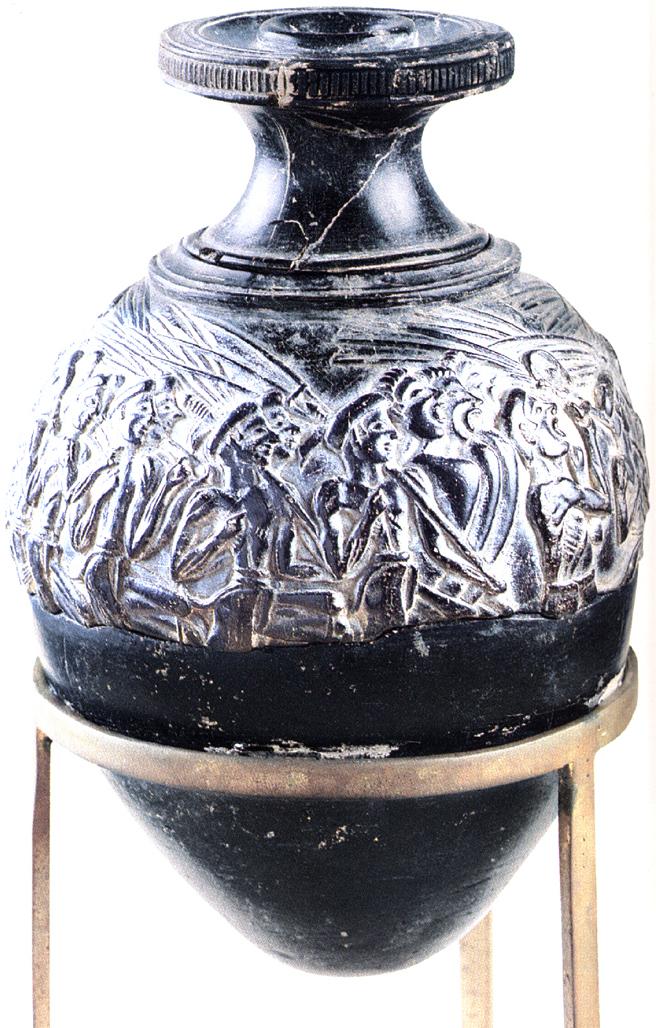 Fig. 8 - Harvesters rhyton |
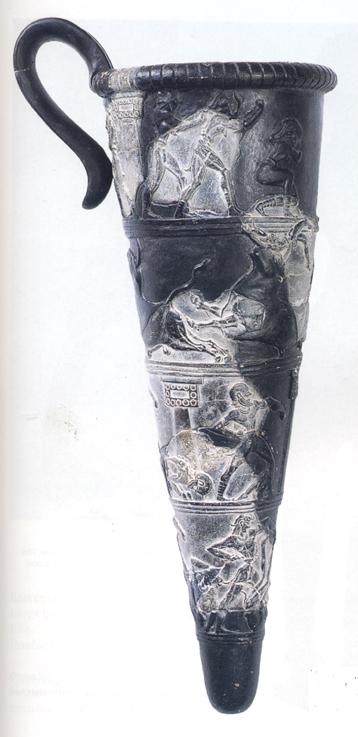 Fig. 9 - Boxers rhyton |
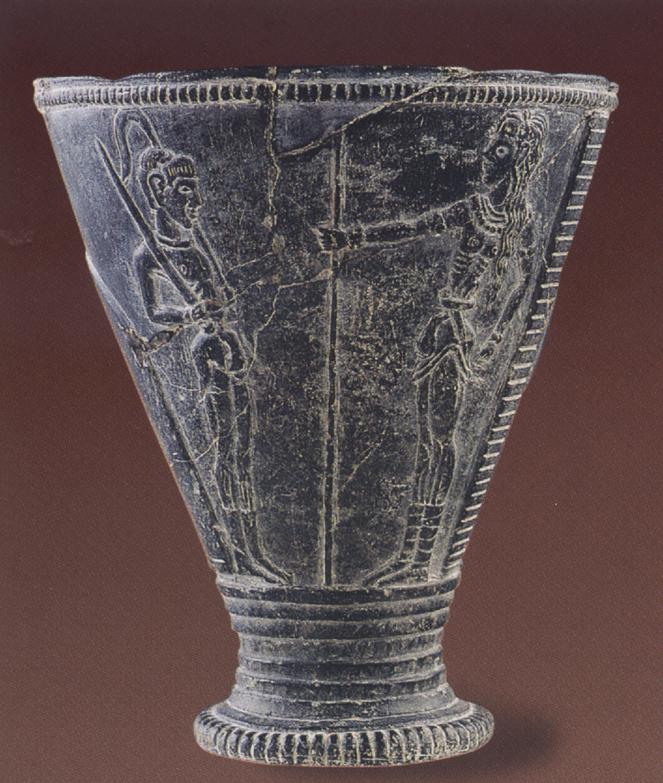 Fig. 10 - Prince cup |
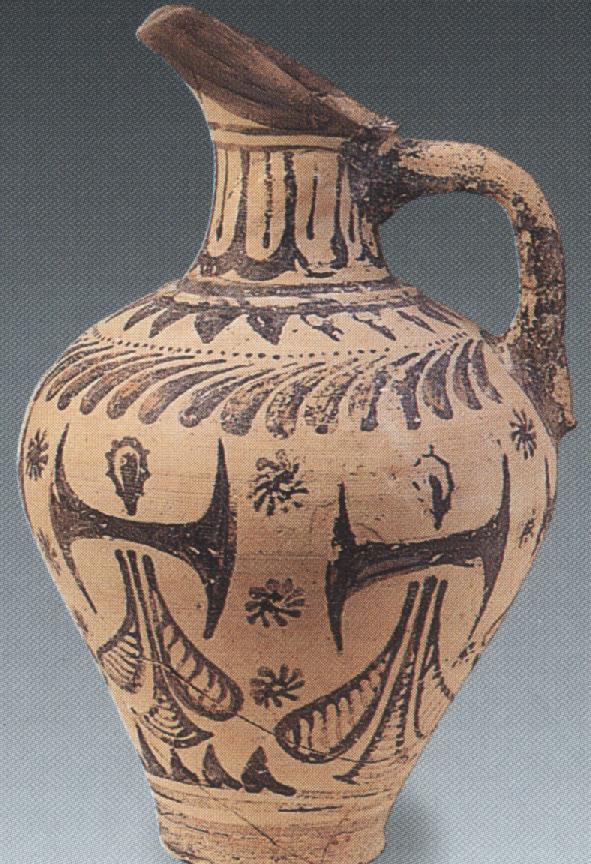 Fig. 11 - Pitcher with double-axe and sacred-knot symbols |
|
Neopalatial Haghia Triada was destroyed by a big fire, connected to the catastrophes which affected the whole island about 1450 BC, likely due to the Mycenaeans, who saved only the palace of Knossos, to become their main political and administrative center in Crete. In this period, defined as Final Palatial Period (approximately 1450-1200 BC), Haghia Triada gradually recovered and from about 1380 became an important Mycenaean centre: we have an evidence of this status from the construction of a big megaron over the ruins of the "Villa" (fig. 12), from the so-called agorà, which crosses the village formed by numerous houses and shops (fig. 13) and from the famous stone Painted Sarcophagus (fig. 14) |
|
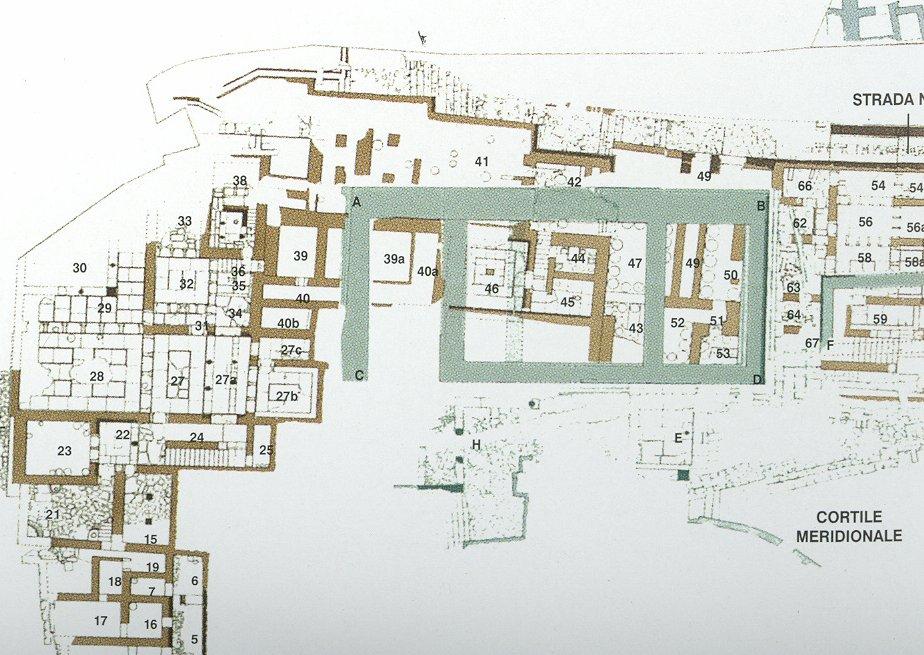 Fig. 12 - Mycenaean megaron |
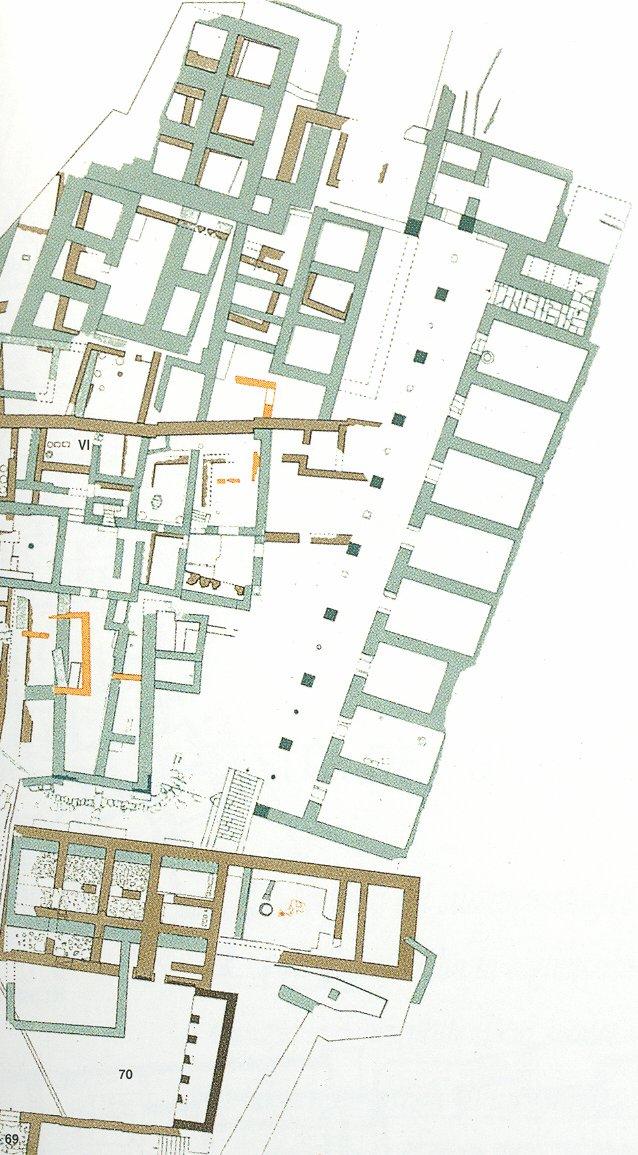 Fig. 13 - Agora |
 Fig. 14 - Painted sarcophagus |
|
|
In the Postpalatial Period (Late Minoan IIIC and Subminoan) Haghia Triada concludes its existence as an urban center even if on the so-called "Piazzale dei Sacelli" a great cultic area settles in until the beginning of the Greek Age. |
|